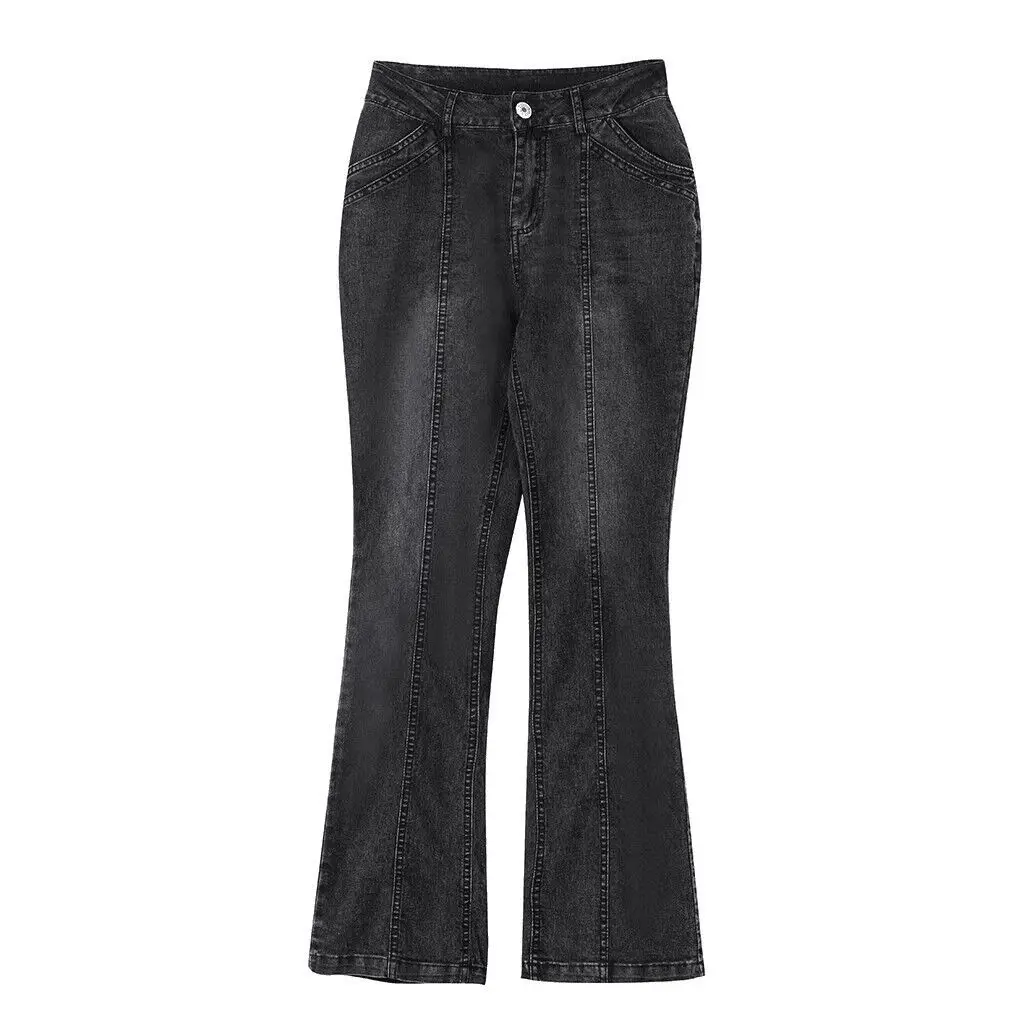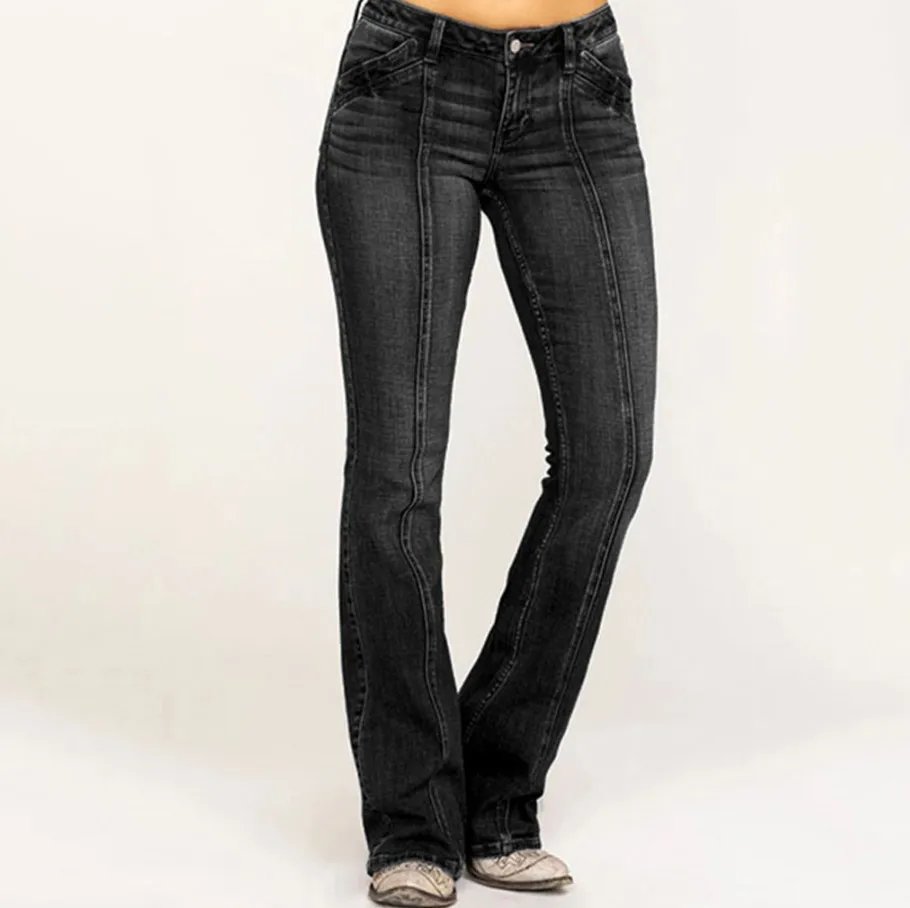How to fade jeans? Fading jeans is a popular DIY technique that allows you to achieve a personalized, worn-in look without waiting years for natural wear and tear.

Introduction:
Jeans fading is an art form that transforms new denim into a vintage or distressed style. The process involves breaking down the indigo dye and exposing the underlying white threads, creating a unique pattern of whiskers, honeycombs, and overall lighter shades. Fading jeans can be done using various methods, each with different intensities and results.
1. Natural Fade Method:
The most authentic way to fade jeans is through prolonged and consistent wear. Wear your jeans frequently, especially during activities that cause friction like sitting, bending, or cycling. The high-stress areas such as knees, thighs, and back pockets will naturally fade over time. However, this method requires patience and may not yield even or controlled fades.
2. Sun Bleaching:
For a quicker effect, sun bleaching is a popular option. Start by washing your jeans to remove any dirt or fabric softener which might hinder the fading process. Soak the jeans in water and then lay them flat on a clean surface where they’ll receive direct sunlight. Use clothespins to secure folds or scrunch parts you want more faded. Keep rotating the jeans throughout the day to ensure even exposure. Be cautious though; excessive sunlight can weaken the fabric and cause color loss beyond fading.
3. Manual Abrasion Techniques:
- Sandpaper: Gently rub sandpaper over areas where you’d like to see more significant fading, focusing on seams and creases. Sand lightly and evenly, checking regularly to avoid over-fading.
- Pumice Stone: A pumice stone is gentler than sandpaper but still effective. It works well on cotton denim, particularly for creating localized fades around the knees and hemlines.
- Wire Brush: For heavy distressing, use a wire brush to scrape away at the indigo layer. This method should be used sparingly and only on areas where extreme wear would naturally occur.

4. Soap and Water Solution:
Create a solution of warm water and mild soap or bleach (use caution with bleach as it can damage fabric). Apply the solution to the targeted areas with a sponge or brush, agitate gently, and let sit until the desired shade is achieved. Rinse thoroughly and air dry. This method offers more control compared to sun bleaching but can lead to unevenness if not applied consistently.
5. Machine Wash and Dry:
Washing machines can help speed up the fading process. Wash your jeans alone or with other dark-colored items on a hot cycle with detergent. Repeat the process several times until you get the desired fade. Additionally, machine drying on high heat accelerates the fading, especially when jeans are slightly damp from washing.
6. Professional Products:
There are commercial fading agents designed specifically for denim. Follow the manufacturer’s instructions carefully. These products often require application, rubbing, and sometimes washing or soaking to activate the fading process.
7. Strategic Cutting and Ripping:
For a more dramatic effect, consider cutting or ripping the denim to expose the white weft threads underneath. You can mimic natural wear patterns or create custom designs.
Safety and Precautions:
Regardless of the method chosen, always test a small, inconspicuous area first to gauge how the denim reacts. Protect your skin from harsh chemicals and abrasive tools, and never leave denim unattended while using bleach or near open flames.

How to maintain and store jeans
Jeans are a staple in most wardrobes due to their durability and versatility. Proper care and storage can significantly extend the life of your denim, maintaining its fit, color, and overall appearance.
1. Washing Your Jeans:
- Initial Wash: New jeans often have excess dye that may bleed during the first few washes. It is advisable to wash them separately or with like colors for the initial wash.
- Infrequent Washing: Denim does not need to be washed after every wear. Frequent washing can cause shrinkage, color loss, and premature wear. Instead, spot clean stains when possible and air out your jeans between wears.
- Cold Water: When it’s time to wash, use cold water to preserve the fabric integrity and prevent color fading.
- Use Mild Detergent: Avoid harsh detergents and bleach; opt for mild detergent or specifically designed denim detergent.
- Inside Out Washing: Turn your jeans inside out before washing to minimize abrasion and protect the outer layer from fading.
- Air Dry: Hang jeans to drip dry or lay flat. Avoid using a dryer as heat can cause shrinkage and damage the fibers.
2. Repairing Jeans:
- Patch Up Holes: Small holes can be repaired by applying iron-on patches or sewing them up. Larger tears can be mended with visible stitching for a unique look.
- Address Wear Points: Reinforce areas prone to wear such as hems, pockets, and crotch seams before they become problematic.
3. Storage Techniques:
- Clean and Dry: Ensure your jeans are thoroughly clean and completely dry before storing to prevent mold or mildew growth.
- Folded Storage: Fold your jeans neatly, smoothing out creases to avoid deep-set wrinkles. You can place acid-free tissue paper between folds to help maintain shape.
- Hang With Care: Hanging jeans can lead to stretching over time, particularly at the waistband. If you prefer to hang them, use wide, padded hangers to distribute weight evenly.
- Dark Denim: For dark jeans, consider storing them in a breathable cotton bag or wrapped in black fabric to prevent sunlight from causing color fade.
- Climate Control: Store jeans in a cool, dry place away from direct sunlight. Avoid attics or basements where extreme temperatures and humidity fluctuations can affect the fabric.

4. Seasonal Rotation:
Rotate your jeans according to the season, ensuring that those not in regular use are stored appropriately. This helps to prevent unnecessary wear and maintains freshness.
5. Preserving Shape:
To keep the original shape of your jeans, especially if they’re tailored, stuff them with acid-free tissue paper or old t-shirts while storing.
6. Considerations for Raw Denim:
Raw denim requires special care. The unwashed fabric should be soaked rather than machine washed, and worn frequently without washing for an extended period to allow the denim to form to your body and develop unique fades.
Properly caring for and storing your jeans not only ensures they last longer but also preserves their character and style. By adopting these practices, you’ll be able to enjoy your favorite pair of jeans for many years to come. Remember, treating your denim gently and attentively contributes to its longevity and sustainability.
Conclusion:
Fading jeans takes time, patience, and sometimes creativity. Each method has its own advantages and disadvantages, so choose the one that aligns best with your desired outcome and level of commitment. Remember that fading denim is a gradual process, and achieving that perfect vintage appeal often comes from a blend of natural wear and strategic interventions.
